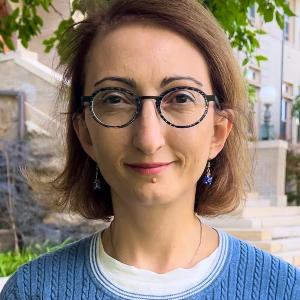
© Ebru Bozdağ
Ebru Bozdağ ist außerordentliche Professorin an der Colorado School of Mines, wo sie für Geophysik und angewandte Mathematik und Statistik zuständig ist.
ECS Co-Host ist dieses Mal Ingo Stotz.
Das DeepDyn Seminar findet online als zoom-meeting statt. DeepDyn Mitglieder erhalten den Zuganglink automatisch vor dem Seminar. Wir bitten externe Seminargäste sich für das Seminar zu registrieren, um den Zugangslink zu erhalten.
Earth’s deep interior and dynamics from adjoint tomography: mantle structure and anisotropy
Abstract
Adjoint tomography has become a routine tool in passive-source seismology with the advances in high-performance computing for the accurate simulations of wave propagation in complex media and incorporate them in seismic tomography to achieve high-resolution models of Earth’s interior. First-generation GLAD (GLobal ADjoint) models (GLAD-M15 (Bozdag et al. 2016), GLAD-M25 (Lei et al. 2020), GLAD-M35 (Cui et al. 2024)) were constructed globally by inverting crust and mantle simultaneously avoiding crustal corrections. Since Earth’s upper mantle and lithosphere show significant evidence for anisotropy related to deformation and composition, GLAD models were parameterized radially anisotropic in the upper mantle. Starting from GLAD-M25, we performed 28 conjugate gradient iterations and constructed model GLAD-M28-AZI by also including azimuthal anisotropy in the parameterization of the inverse problem where we inverted azimuthal and radial anisotropy simultaneously. Despite using minor- and major-arc surface waves from 300 earthquakes only, GLAD-M28-AZI approaches continental-scale resolution in regions with good data coverage (i.e., North America, Europe, etc.) depicting smaller-scale tectonic and flow patterns, giving us a chance to have a more detailed and unified view of the anisotropy globally. In the next step, we explore how anisotropy derived from seismic tomography compares to geodynamical modeling observations to have better insight into mantle dynamics. We will discuss our current results, challenges, and future directions in global seismology and tomography.
